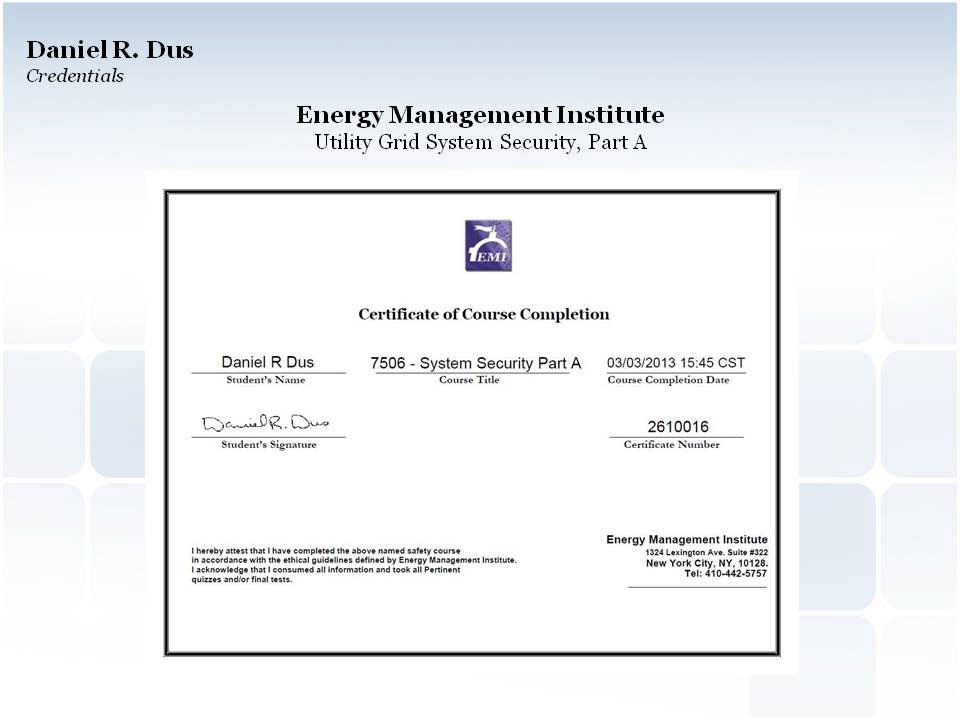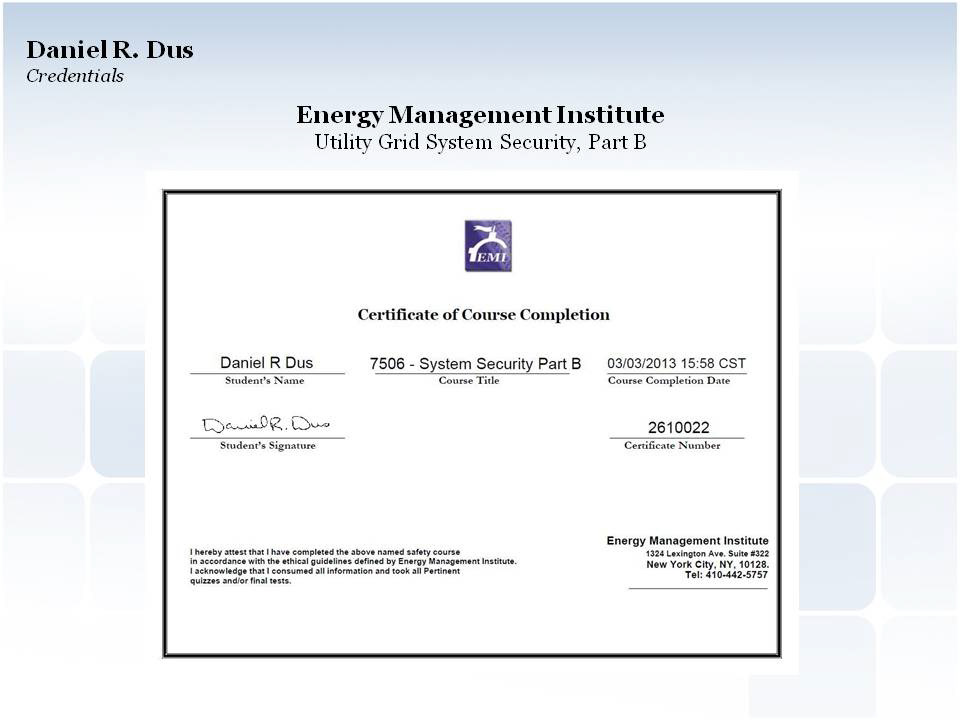UTILITY GRID SYSTEM SECURITY, PART A & B
System Security is the focus of this 6th course in the Transmission System Operation training program. The concept of operating security is developed as the ability of a power system to withstand or limit the adverse effects of any credible contingency, including: overload beyond emergency rating, excessive or inadequate voltage, loss of stability, or abnormal frequency deviation. Line loadability is analyzed from the standpoint of three major limits that can restrict the flow of MW across a given transmission corridor: the thermal limit, the voltage drop limit, and the stability limit. Loading limitations of other transmission equipment is described as well, including cable and transformer loading. This material then gives an overview of security monitoring in the control room, with the help of SCADA and EMS systems, on-line power flows and contingency analysis, and dynamic security monitoring. Finally, techniques for improving system security are presented, including the role of Security Coordinators, the exchange of security data, loading relief options, preservation of operating reserve, and emergency methods. At the completion of this course, the student should be able to:
• Explain what happens to tie-line flow in the first 10 to 20 seconds following a large unit trip in an interconnection
• Discuss the problems that may be associated with loop flow and parallel flow during normal operating conditions
• Describe the consequences of operating a transmission line above its emergency thermal rating
• State applicable industry standards for maximum permissible voltage drop following credible contingencies
• Explain what is meant by the « steady-state stability limit » across a given transmission path. Give the expression for steady state stability limit in terms of voltage and reactance
• Describe the consequences of loss of synchronism on the transmission network • Sketch a typical power angle curve and compare it to the curve that would result if one or more parallel circuits trip
• Sketch a typical line loadability curve for transmission lines of different lengths. Explain and calculate the overriding limits for short lines vs. long lines • Explain the thermal capability of power transformers
• State a typical transformer overload magnitude, duration, and expected loss of life, based on established loading guides for power transformers • Describe how SCADA/EMS systems help operators to continuously monitor the security of the power network
• Give examples of software tools (incorporated into an EMS) that alert operators to actual and predicted security problems on the network • Explain what is meant by dynamic security assessment (DSA)
• List the operating security data that must be provided and updated by each control area every 10 minutes • Understand the loading relief methods that may be undertaken and supervised by Security Coordinators
• Explain how FACTS devices can dynamically control the flow of power over specific transmission circuits • Describe the purpose and operation of a phase angle regulator (PAR)
• Explain typical operating reserve practices
The Energy Management Institute (EMI) is the foremost innovative professional services firm providing insight into the energy future. EMI uses its specialized energy market expertise to bring a wide array of services and products to energy professionals. EMI is dedicated to providing the most comprehensive and exciting training experiences available to energy professionals. EMI is an education partner with the New York Mercantile Exchange (NYMEX), providing training to the domestic and international exchange communities.


